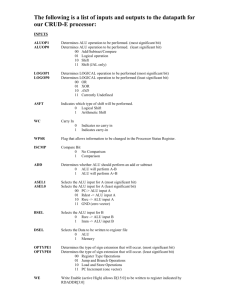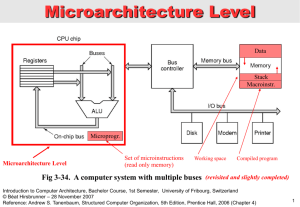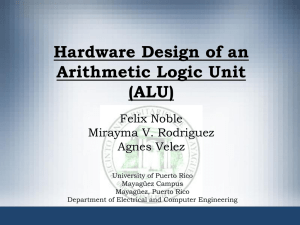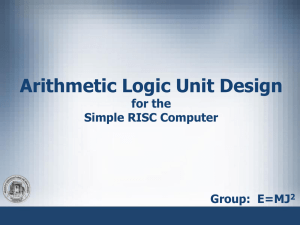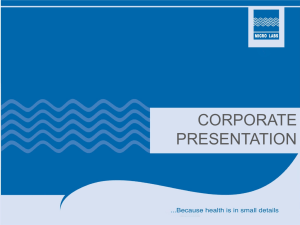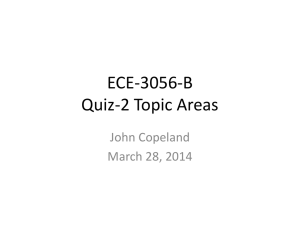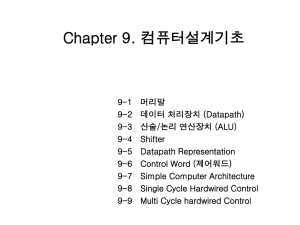slides - Fosdem
advertisement
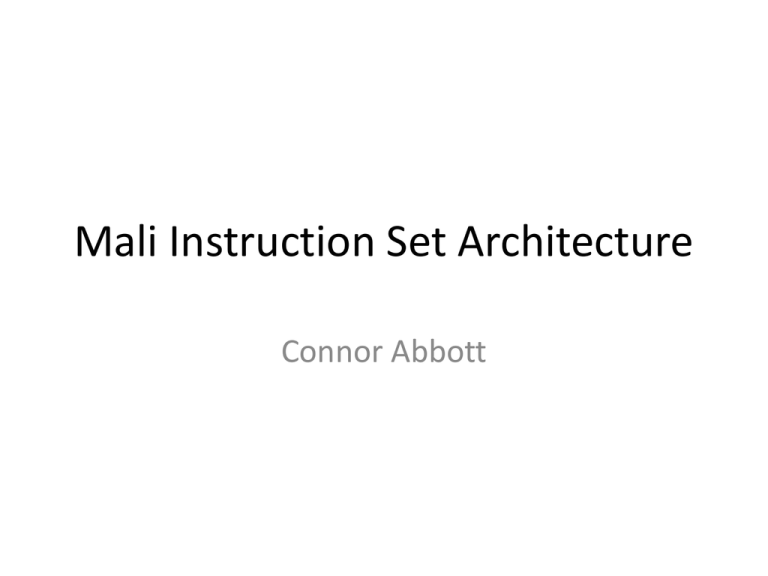
Mali Instruction Set Architecture Connor Abbott Background • Started 2 years ago at FOSDEM • Worked with Ben Brewer to reverse-engineer the ISA for Mali 200/400 • Took ~6 months for reverse-engineering, 1.5 years for writing compilers and work still ongoing Mali Architecture • Mali 200/400: Midgard – Geometry Processor (GP) – Pixel Processor (PP) • Mali T6xx: Utgard – Unified architecture Geometry Processor Architecture • Designed for multimedia as well (JPEG, H264, etc.) • Scalar VLIW architecture • Problem: how to reduce # of register accesses per instruction? – Register ports are really expensive! Existing Solutions • Restrictions on input & output registers (R600) • Split datapath and register file in half (TI C6x) Feedback Registers • Idea: register ports are expensive, FIFO’s are cheap • Keep a queue of the last few results • Eliminate most register accesses Feedback Registers mux ALU ALU mux FIFO FIFO Register File Compiler • Idea: programs on the GP look like a constrained dataflow graph • Instead of standard 3-address instructions (e.g. LLVM, TGSI) or expression trees (GLSL IR), our IR will consist of a directed acyclic graph of operations • The scheduler will place nodes in order to satisfy constraints Dataflow Graph load r0 load r1 load r2 add reciprocal add multiply store r0 Scheduled Dataflow Graph Register Read ALU 1 Cycle 1 load r0 Cycle 2 load r1 add Cycle 3 load r2 add Cycle 4 ALU 2 Output rcp mul store r0 Dependency Issues add load r0 store r0 multiply store r1 ? Dependency Issues • Solution: keep a list of side-effecting “root” nodes • Each node keeps track of the earliest root node that uses it, called the “successor node” • Semantically, each node runs immediately before its successor Dependency Issues add store r0 load r0 multiply store r1 Scheduling • List scheduler, working backwards • Minimum and maximum latency • Sometimes, we cannot schedule a node close enough to satisfy the maximum latency constraint – “Thread” move nodes – Not enough space for move nodes => use registers instead Scheduling Cycle 1 Cycle 2 Cycle 3 Cycle 4 Cycle 5 Cycle 6 Scheduling Cycle 1 Cycle 2 Cycle 3 Cycle 4 Cycle 5 Cycle 6 move Pixel Processor Architecture • Vector • Barreled architecture – 100’s of threads, 128 pipeline stages • Separate thread per fragment – explicit synchronization for derivatives and texture fetches Instructions • 128 stages map to 12 “units” or “subpipelines” that can be enabled/disabled per instruction • Each instruction – 32-bit control word • Instruction length • Enabled units – Packed bitfield of instructions for each unit, aligned to 32 bits Pipeline Varying Fetch Texture Fetch Uniform/Temp Fetch Scalar Multiply ALU Vector Multiply ALU Scalar Add ALU Vector Add ALU Complex/LUT ALU FB Read/Temp Write Branch Compiler • A lot easier than the GP! • High-level IR (pp_hir) – SSA-based – Optimizations, lowering – Each instruction represents one pipeline stage • Low-level IR (pp_lir) – Models the pipeline directly – Register allocation, scheduling HIR • Lower from GLSL IR (not done yet) • Convert to SSA (hopefully not needed with GLSL IR SSA work) • Optimizations & lowering • Lower to LIR LIR • Start off with naïve translation from HIR • Peephole optimizations – Load-store forwarding – Replace normal registers with pipeline registers • Schedule for register pressure (registers very scarce, spilling expensive!) • Register allocation & register coalescing • Post-regalloc scheduler, try to combine instructions Mali T6xx Architecture • Somewhat similar to Pixel Processor • “Tri-pipe” Architecture – ALU – Load/store – Texture • Reduced depth of each pipeline Instructions • Each instruction has 4 tag bits which store the pipeline (ALU, Load/store, texture) and size (aligned to 128 bits) • ALU instruction words are similar to before: control word, packed bitfield of instructions • Load/store words – 2 128-bit loads/stores per cycle • Texture words – texture fetches and derivatives Arithmetic Vector Mult. Scalar Add Vector Add Scalar Mult. LUT Output /Discar d Branch Load/Store Texture Future • Integration with Mesa/GLSL IR (SSA…) • Testing/optimization with real-world shaders Thank you! Questions?



